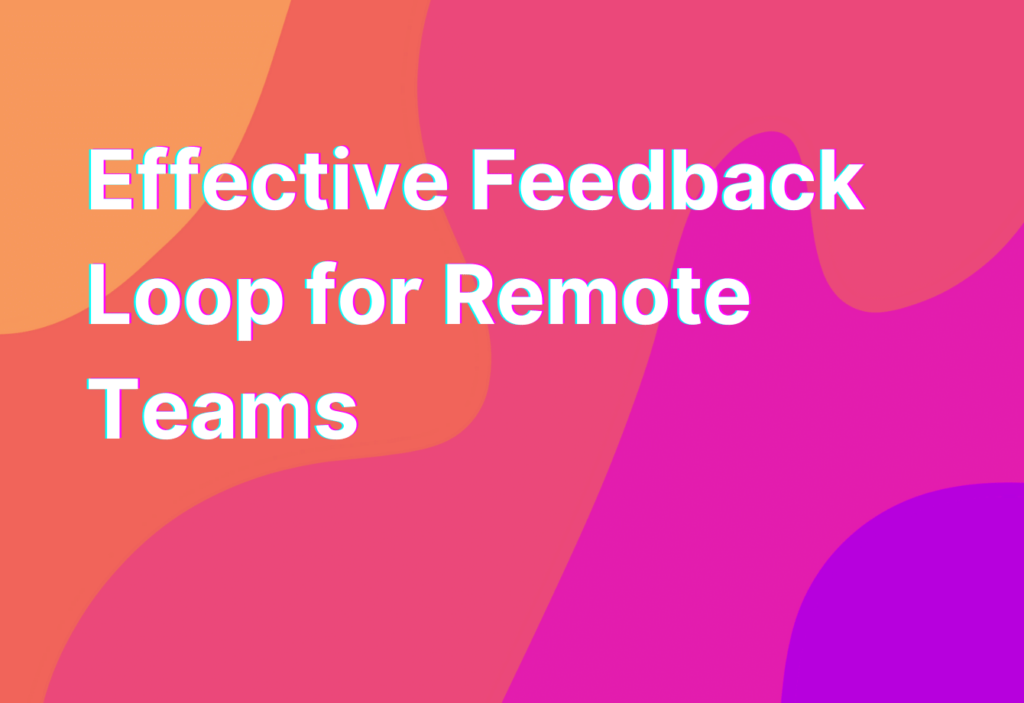Effective Feedback Loop for Remote Teams
As remote work continues to gain popularity, it’s important for remote teams to establish effective communication channels. One crucial aspect of communication is feedback. In this article, we will explore the concept of a feedback loop and how it can be implemented in remote teams to improve collaboration and productivity.
What is a Feedback Loop?
A feedback loop is a process in which information is shared between individuals or groups to provide input, guidance, and evaluation. It is a continuous cycle of giving and receiving feedback, allowing for ongoing improvement and growth.
In the context of remote teams, a feedback loop is essential for maintaining clear communication, fostering a sense of belonging, and ensuring that everyone is aligned towards common goals. Without a feedback loop, remote teams may struggle with miscommunication, lack of direction, and decreased productivity.
The Importance of Feedback in Remote Teams
Feedback plays a crucial role in remote teams for several reasons:
- Improving Performance: Feedback helps team members understand their strengths and areas for improvement, allowing them to enhance their performance and contribute more effectively to the team.
- Building Trust: Regular feedback builds trust among team members, as it demonstrates that their opinions and contributions are valued. This trust is especially important in remote teams, where face-to-face interactions are limited.
- Enhancing Collaboration: Feedback encourages collaboration by providing opportunities for team members to share ideas, provide suggestions, and work together towards common goals.
- Increasing Engagement: When team members receive feedback, they feel more engaged and connected to the team and its objectives. This, in turn, leads to higher motivation and productivity.
Implementing an Effective Feedback Loop
Now that we understand the importance of a feedback loop, let’s explore how to implement one in remote teams:
1. Establish Clear Communication Channels
Effective communication is the foundation of a successful feedback loop. Remote teams should establish clear channels for communication, such as group chat platforms like Group chat and video conferencing tools. These channels should be easily accessible to all team members and promote open and transparent communication.
2. Set Expectations
Clearly define the expectations for feedback within the team. This includes the frequency of feedback, the format it should be provided in, and the specific areas to focus on. By setting expectations, team members will have a clear understanding of what is expected of them and how they can contribute to the feedback loop.
3. Encourage Regular Feedback
Feedback should not be limited to formal performance reviews or specific occasions. Encourage team members to provide feedback on an ongoing basis, whether it’s through one-on-one conversations, team meetings, or dedicated feedback sessions. Regular feedback ensures that issues are addressed in a timely manner and allows for continuous improvement.
4. Foster a Culture of Constructive Feedback
Creating a culture where feedback is seen as constructive and helpful is essential. Encourage team members to provide feedback in a respectful and supportive manner, focusing on specific behaviors or actions rather than personal attacks. This will create a safe environment where everyone feels comfortable giving and receiving feedback.
5. Act on Feedback
Feedback is only valuable if it leads to action. Encourage team members to act on the feedback they receive and make necessary improvements. This demonstrates that feedback is taken seriously and reinforces the importance of the feedback loop within the team.
Wrapping Up
A feedback loop is a vital component of effective communication in remote teams. By establishing clear communication channels, setting expectations, encouraging regular feedback, fostering a culture of constructive feedback, and acting on feedback, remote teams can enhance collaboration, improve performance, and foster a sense of belonging. Implementing an effective feedback loop is an ongoing process that requires commitment and effort from all team members, but the benefits are well worth it.


